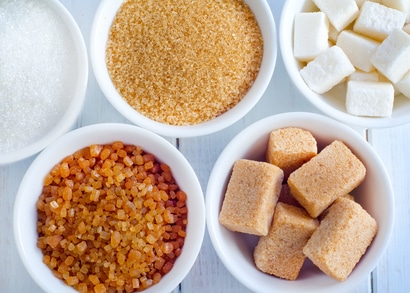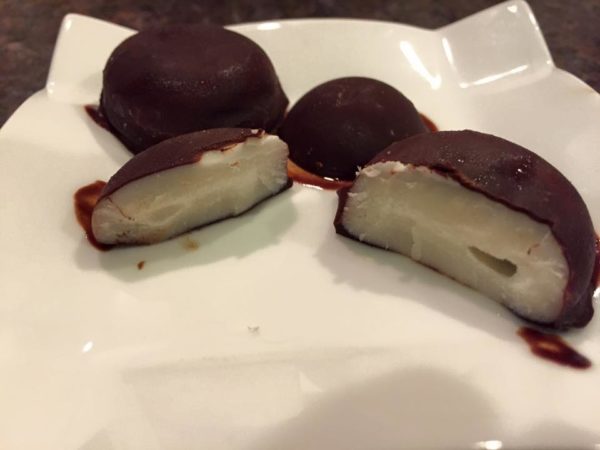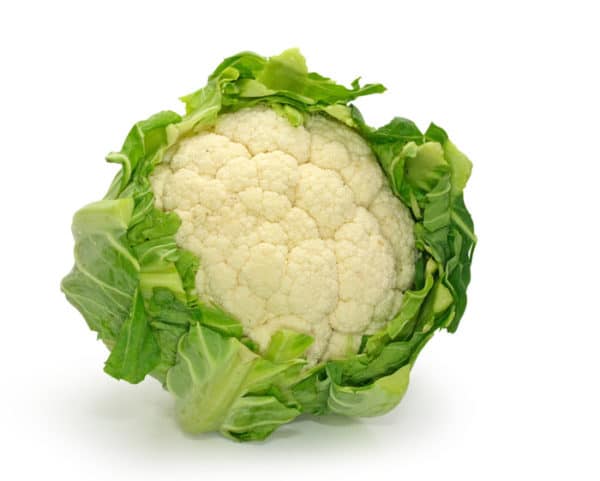

- Fun
- Fitness
- Food
- Flexibility
The first in the series, The Physiology of Fun, covered how important it is to have laughter and fun in your life. For this article, I’d like to focus on FOOD. A specific food in particular, that makes life sweeter and many “fun” things are associated with it: sweeteners.
In the post The Sweetest of Them All (Part 1) I told you all about the dangers of sugar, raw agave nectar, artificial sweeteners, and high glycemic index sweeteners. I’m sure at this point you might be thinking…
So, What Sweeteners CAN Be Used?
Below is a users guide to sweeteners. Whatever your decision, be sure to make sweeteners a tiny part of a whole foods diet to avoid the risk of complications.
Sweeteners are often compared by looking at their glycemic index. The glycemic index, or GI is a measure of the effects of carbohydrates on blood sugar levels. Carbohydrates that break down quickly during digestion, releasing glucose rapidly into the bloodstream, have a high GI; carbohydrates that break down more slowly, releasing glucose more gradually into the bloodstream, have a low GI. High fructose corn syrup and sucrose have a glycemic index in the 80’s. Pure glucose has a glycemic index of 100.
1- Blended fruits either dried or fresh, are the healthiest alternatives to sugar. Fresh blended banana, apple, peach, mango or pear are the most nutrient dense sweetener choices. Of course, they have strong tastes, so work well when that’s desired.
Some people who have blood sugar imbalances need to be careful to stick to the less sweet fruit to avoid sugar highs and lows. In my B4 Be Gone program, I teach how to monitor your own blood sugar and determine which foods keep your blood sugars balanced.
Dates, figs, raisins, dried apricots, goji berries and other dried fruits can be soaked and blended with water to make syrup like sweeteners.
Here’s a date paste recipe. You may need to alter the water a bit for other dried fruits.
Date Paste Recipe
Ingredients
1/2 pounds pitted dates
Preparation
- Soak pitted dates in 1 cup room temperature or warm water for 30 minutes
- Blend until smooth
- Store in refrigerator
2-Whole food powders can be used as sweeteners. These include lucuma powder, pomegranate powder, mesquite powder, yacon powder, goji powder, berry powder and a variety of other powders made from freeze dried whole fruits. Some, like lucuma, mesquite and yacon, have a mild, maple syrup like taste, others like pomegranate and goji berry have a distinct fruit flavor. The quantity needed depends on which one you choose and how strong your sweet tooth is. Experiment and see for yourself. Be sure to check in with your blood sugar and make sure that what you choose keeps your sugar nice and steady.
3- Non or Low Caloric Sweeteners (glycemic index 0)
- Stevia is an herb that has been used as a sweetener in South America for hundreds of years. It is calorie-free, which means it has no effect on your bodies’ production
of insulin. Stevia is about 300 times sweeter than sugar, so only tiny amounts are needed for sweetening. I’ve never found any reports of toxicity with Stevia. The downside of using Stevia is the slightly bitter aftertaste. The aftertaste has been reported to be neutralized when Stevia is used with xylitol, in the ratio of 12 parts xylitol to 1 part Stevia. Whole, fresh green leaf Stevia has less of an aftertaste than the while stuff.
- Xylitol is found in fibrous vegetables and fruit, like plums, raspberries and cauliflower as well as in corn cobs and birch tree bark. Your body produces up to 15 grams of it daily during normal metabolism. Xylitol is a five-carbon sugar, which means that it is anti-microbial, whereas all other forms of sugar are six-carbon sugars, which cause bacteria and fungi overgrowth. It has a very low glycemic index**(7) and it inhibits yeast, plaque and dental cavities, retards demineralization, and promotes re-mineralization of tooth enamel. Be sure to choose birch xylitol when buying commercially, rather than corn.
- Lo Han Guo (Monkfruit) Calorie-free, aftertaste-free and non-glycemic but about 300 times sweeter than sugar, liquid and powdered lo han (also called lohan guo) concentrate is derived from the antioxidant-rich, lemon-sized fruits of trees that thrive in the hot, misty mountains of southern China and northern Thailand and were allegedly first cultivated by Buddhist monks 800 years ago. This is the biggest competitor to stevia since it does not have a bitter aftertaste. Said to have a glycemic index of 0. Swanson brand appears to be the purest powder form. Some are cut with fructose, sucralose and other fillers.
- Sugar alcohols. These include not only xylitol (already mentioned above) but also erythritol, mannitol, and sorbitol. These are also five-carbon sugars, which make them low glycemic. Erythritol is actually quite good but not as easy to find and not as affordable as xylitol. There is a brand called Zero available on Amazon and many health food stores. It occurs naturally in fruits such as melons, pears and grapes, is about 70 percent as sweet as table sugar, and has no aftertaste. Like stevia, it also does not harm teeth.
- Combinations of low glycemic sweeteners: Lakanto is a combination of Lo Han and Erythritol. It comes as a light brown powder and is mild and quite delicious.
4- Medium to high glycemic list (use sparingly if at all):
- Raw Honey – While it contains trace amounts of nutrients, honey is rapidly absorbed and increases blood sugars quickly, so use sparingly. It is a relatively high glycemic sweetener, with a glycemic index of 55.
- Yacon Syrup – made from the root of the yacon plant, a Peruvian, sweet potato like tuber, this syrup has a high concentration of inulin and fructo oligo saccarides, which provide fuel for your intestinal microorganisms and very few calories for you. It’s been used in South America to lower blood sugar in those with diabetes and to improve digestion. Some sources say it’s heated to 120-140 degrees, other sources claim their process leaves it raw. It’s assumed to be a low glycemic sweetener, with reports that its glycemic index is 0.
Coconut Palm sugar – Reported to be the dehydrated sweet juices of tropical coconut palm sugar blossoms, produced by climbing high into the canopy of swaying coconuts and harvesting the sweet nectar by gently slicing the flower, it is organic, unprocessed, unfiltered, and unbleached. Once collected, the nectars are kettle-boiled into a thick caramel and ground to a fine crystal high in Potassium, Magnesium, Zinc and Iron and a natural source of the vitamins B1, B2, B3, B6 and C. It is a relatively low glycemic sweetener, with a glycemic index of 35. Use with caution if you have blood sugar issues. Some of my B4 Be Gone members reported that it spiked their blood sugar.
- Brown Rice syrup – Made from fermented rice, it contains trace amounts of B vitamins. It is a low glycemic sweetener, with a glycemic index of 25. Use with caution if you have blood sugar issues. Some of my B4 Be Gone members reported that it spiked their blood sugar.
- Barley malt – Made from boiled down barley, it may contain traces of gluten, which is a problem for those with celiac disease and gluten intolerance. Avoid this if you have an autoimmune or neurologic disease, as gluten intolerance can be a contributing factor. It’s a relatively high glycemic sweetener, with a glycemic index of 54.
- Maple syrup – extracted from the sugar maple tree, it contains fewer calories and a higher concentration of minerals than honey. It has a relatively high glycemic index, similar to raw honey. Glycemic index of 55.
- Dehydrated cane juice is dried or crystallized, unrefined juice from sugar cane. Cane sugars are about 96 percent sucrose and four percent minerals. This scant four percent difference actually does slow down blood sugar changes at a statistically significant level. It’s a relatively high glycemic sweetener, with a glycemic index of 55.
- Molasses is the remainder of cane and beet sugar processing after the sugar crystals have been strained out. It contains measurable amounts of iron, calcium, magnesium, and potassium, making it more nutritious than most sweeteners. It’s a relatively high glycemic sweetener, with a glycemic index of 54.
The Never Use List:
The obvious offenders on the “avoid like the plague” list are sucrose and high fructose corn syrup. Next up are the artificial sweeteners.
Man-made sweeteners like aspartame, saccharin, and sucralose are just plain scary. Saccharin has been shown to cause cancer in laboratory rats, and aspartame and sucralose have been implicated in neurologic disease like MS, autoimmune disease, cancer, sleep disorders and migraines. Steer clear of these. Stevia, Erythritol, Lo Han and Xylitol are better alternatives for low calorie sweetness.
Help! How Do I Choose?
That is a great question. Don’t worry and don’t freak out! First things must come first. If you’ve shunned all white sugars and high fructose corn syrup, you are off to a great start. Obviously, you still need to know where your blood sugar levels are, and if you are insulin resistant. Then, you need to know how to make great recipes that contain low-glycemic sweeteners that are still delicious, nutritious, and FUN (I didn’t forget about that).
The good news is that I have created a live Transformational 3-day event in Austin, Texas on March 22-24, 2013 called Spring Into Vitality.
- At this event you will learn not only where your glucose levels currently are, but also how to measure them properly when you get home.
- You will learn if the past sweeteners have depleted you and given you deficiencies via trace mineral testing.
- You will learn how to balance your hormones, and lower cortisol which both have balancing blood sugar effects.
- You will enjoy wholesome, healthy foods for three days (with the VIP package) that will have you feeling like a million bucks.
- You will get to taste test several sweeteners right there at our Nourishment Booths during the event.
- You will learn many delicious recipes for low glycemic desserts, elixirs, or even candies that satisfy that sweet tooth and then some!
- And so much more…
Register now, and demystify the whole sugar controversy by discovering what works in a healthy way for your own unique body chemistry as well as your taste buds:
Spring Into Vitality
Whether you choose to include sweeteners in your daily diet, do include sweetness in your daily life. Sweetness and fun are vital elements of vibrant health.
Love, Health and Joy,
Dr. Ritamarie
How have you used healthy sweeteners in your life? Comment below.
Share this:

Are you feeling stuck?
Do you feel as if something is missing from your practice that's keeping you from delivering breakthrough outcomes for your clients?.
Recent Posts
Our Programs
Nutritional Endocrinology Practitioner Training (NEPT)
The Mastery and Certification tier is our flagship program and provides everything you need to feel confident as a practitioner who knows how to get results that lead to healthy and happy clients.
Functional Assessment Mastery
Explore the relationships between the most important hormones and their relationship with nutrition.
Functional Nutrition Mastery
Learn how to support your clients to eat and supplement in a way that reduces and eliminates chronic symptoms.
Medical Disclaimer: The information on this website is not intended to replace a one-on-one relationship with a qualified health care professional and is not intended as medical advice. It is intended as a sharing of knowledge and information from the research and experience of Dr. Ritamarie Loscalzo, drritamarie.com, and the experts who have contributed. We encourage you to make your own health care decisions based upon your research and in partnership with a qualified health care professional.
Disclosure: Sometimes (but not always), when I share resources in my programs, newsletter, and on my website, I'm using an affiliate link, which means I do make money if you buy. My credibility is extremely important to me; therefore, I only endorse the products, services, and people I believe in. DrRitamarie.com is independently owned and the opinions expressed here are my own.
Click here to see our Privacy Policy.


 of insulin. Stevia is about 300 times sweeter than sugar, so only tiny amounts are needed for sweetening. I’ve never found any reports of toxicity with Stevia. The downside of using Stevia is the slightly bitter aftertaste. The aftertaste has been reported to be neutralized when Stevia is used with xylitol, in the ratio of 12 parts xylitol to 1 part Stevia. Whole, fresh green leaf Stevia has less of an aftertaste than the while stuff.
of insulin. Stevia is about 300 times sweeter than sugar, so only tiny amounts are needed for sweetening. I’ve never found any reports of toxicity with Stevia. The downside of using Stevia is the slightly bitter aftertaste. The aftertaste has been reported to be neutralized when Stevia is used with xylitol, in the ratio of 12 parts xylitol to 1 part Stevia. Whole, fresh green leaf Stevia has less of an aftertaste than the while stuff.










[…] a low-glycemic porridge, leave out the date paste and a half dropper of liquid stevia […]